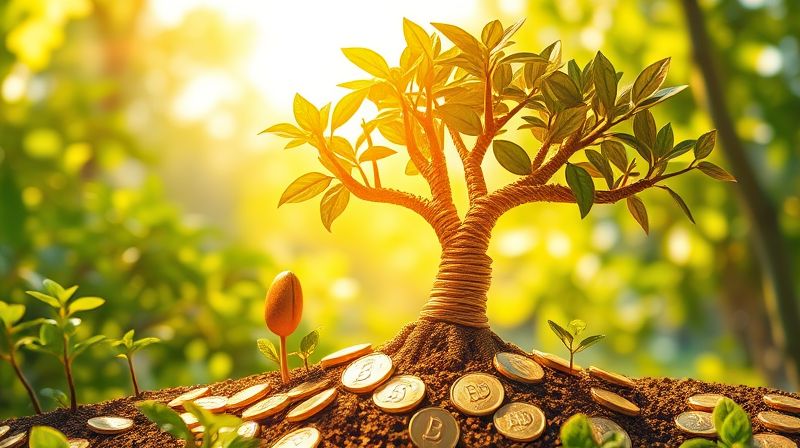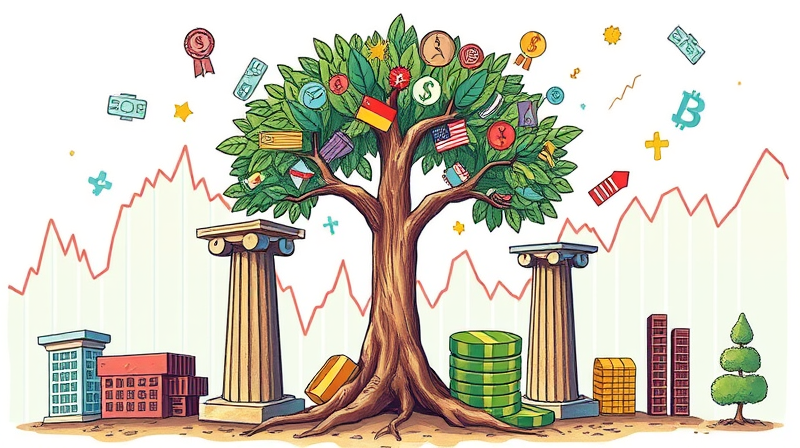
Imagine watching a tiny seed breaking through the soil, gradually growing into a towering tree. This is the magic of compounding in finance: a small initial investment can blossom into significant wealth over time. Like that seed, your money can flourish when nurtured patiently and consistently.
In this article, we’ll explore the principles of compounding, share real stories of exponential growth, and provide actionable strategies to maximize returns on your investments. Whether you’re new to investing or seeking to deepen your financial understanding, you’ll discover why compounding is often called the eighth wonder of the world.
At its core, compound interest is interest earned on both the principal and the accumulated interest from previous periods. Each cycle of growth expands your base, leading to exponential growth over time. The standard formula illustrates this beautifully:
A = P × (1 + r/n)n t, where:
For example, investing $1,000 at a 5% annual rate compounding yearly grows to $1,050 after one year. In year two, you earn 5% on $1,050, not just the original thousand. Over decades, this cycle turns modest sums into impressive nests eggs.
Albert Einstein reportedly dubbed compound interest the “eighth wonder of the world.” His point? Few forces rival its power. Warren Buffett’s early investment in a pinball machine business exemplifies this principle: reinvesting profits multiplied the number of machines, which in turn generated ever-greater returns.
Consider the analogy of fruit-bearing trees. A single tree produces fruit; plant those seeds and soon an entire orchard flourishes. Similarly, reinvested gains become new “trees,” each yielding fresh earnings.
Watching numbers climb over years can be truly motivating. Below is a snapshot of compounding at 5% annual interest on a $1,000 investment:
This progression reveals a simple truth: as time extends, growth accelerates. Early years may feel modest, but later decades reward patience generously.
Time is the catalyst that turns small sums into substantial wealth. The longer you leave funds to compound, the more pronounced the effect. A ₹10,000 investment at 8% annually becomes ₹10,800 in one year and ₹11,664 in two. Stretch that horizon to decades, and the numbers become life-changing.
Early action and consistency are critical. Even modest monthly contributions—such as $100 at a 7% annual return—can exceed $250,000 over 40 years, with total contributions just $48,000. This highlights that it’s not always the size of the initial deposit but the continuity of contributions and reinvestment that matter most.
Each vehicle offers different rates and frequencies of compounding. Assess fees, risk profiles, and reinvestment options to ensure your money compounds unhindered.
Minimizing withdrawals and fees ensures your investment remains on the fast track. Patience and discipline unlock the true potential of compounding.
Many underestimate how small, consistent efforts accumulate significantly. Market fluctuations can deter investors, but long-term horizons smooth out short-term volatility. Remember, compounding rewards persistence more than perfect timing.
Not all investments compound identically—equities, bonds, and savings products each have unique characteristics. Nonetheless, the underlying principle remains: reinvested gains build momentum, driving wealth creation.
Compounding transforms the finance world by proving that small beginnings can yield extraordinary outcomes. Whether you’re saving for retirement, a child’s education, or a dream home, the key is consistent action over time.
By understanding the mechanics, choosing suitable vehicles, and committing to regular contributions, you harness an unstoppable force. Let today be the day you plant your financial seed. With patience, reinvestment, and time, you’ll watch it grow into a lush, abundant tree of prosperity.
References













